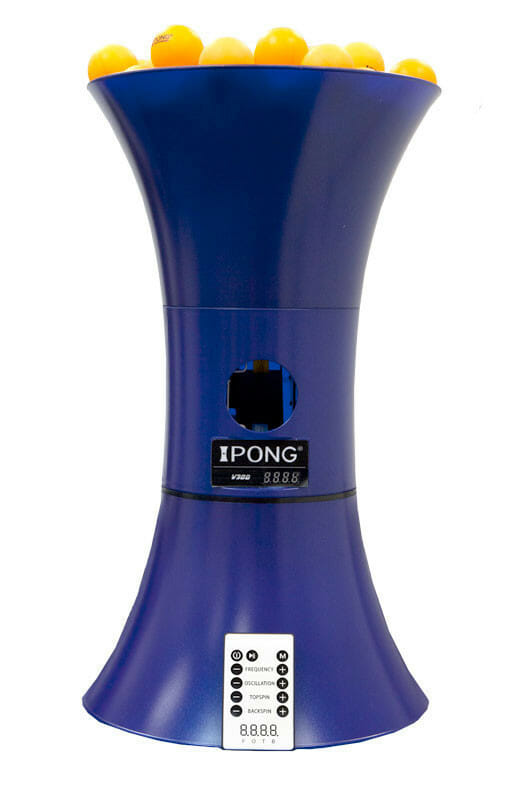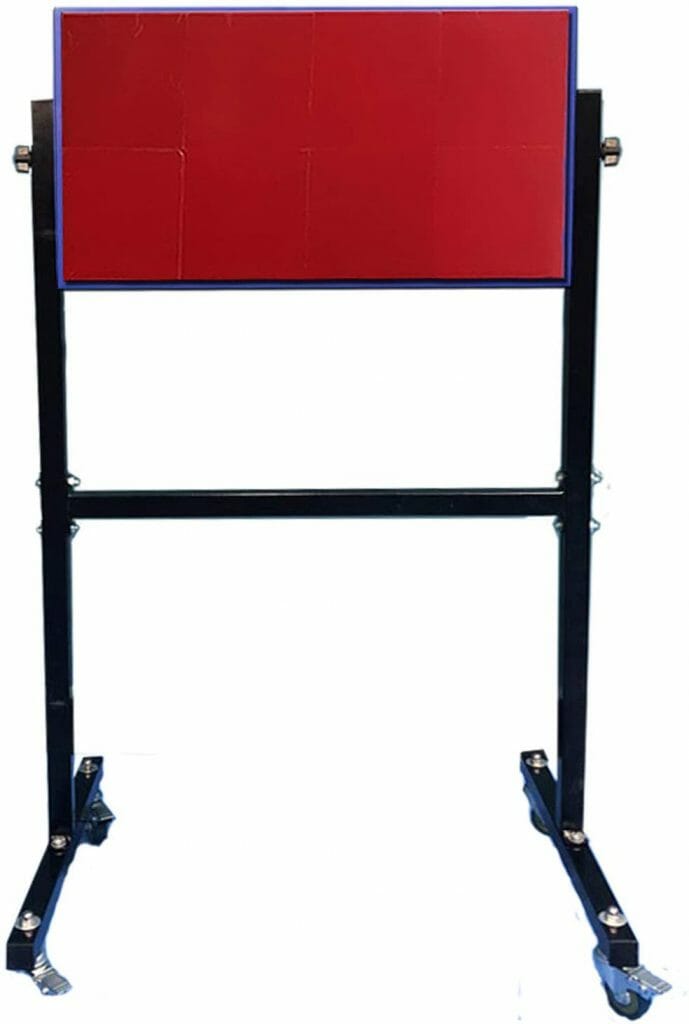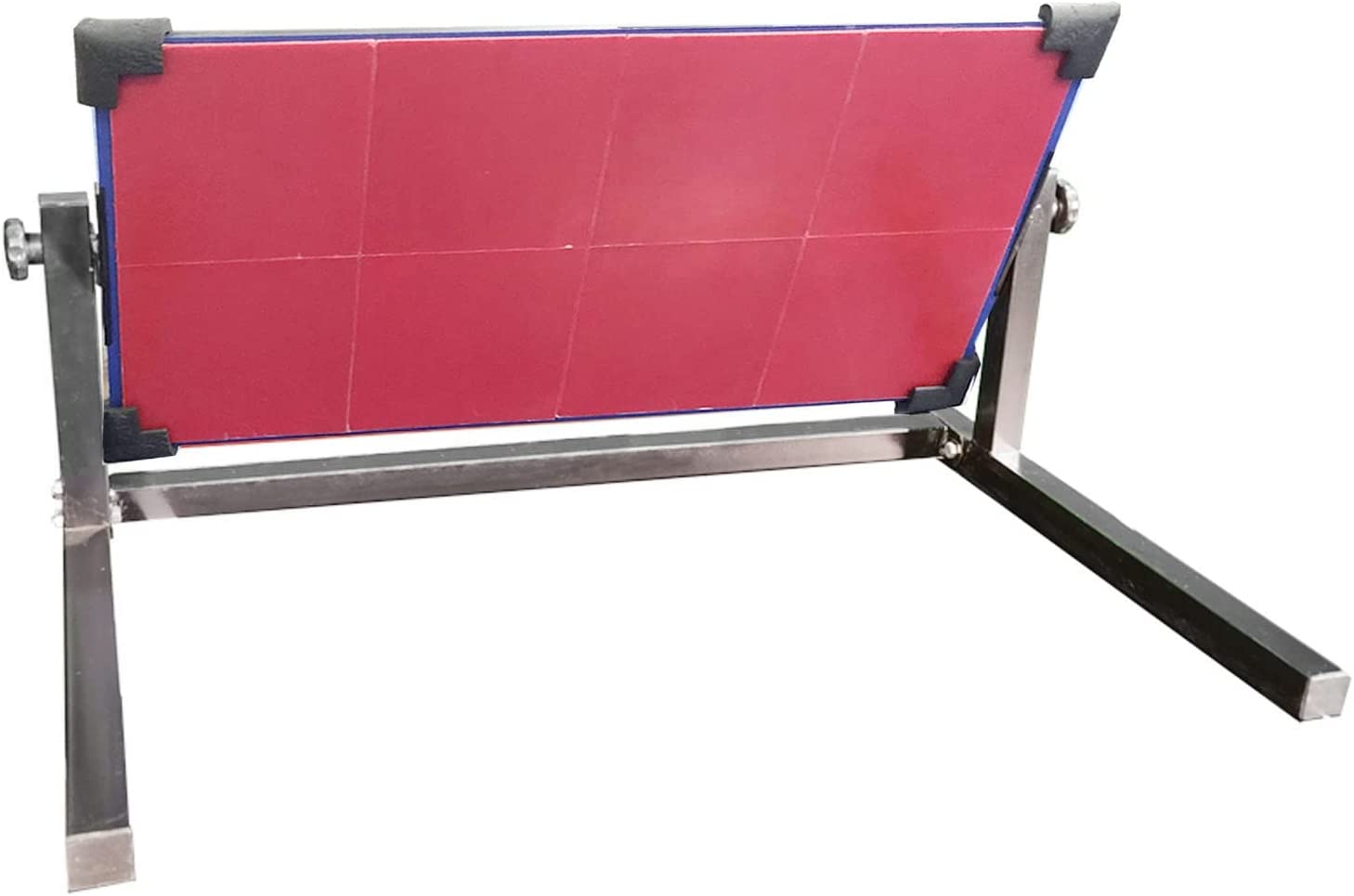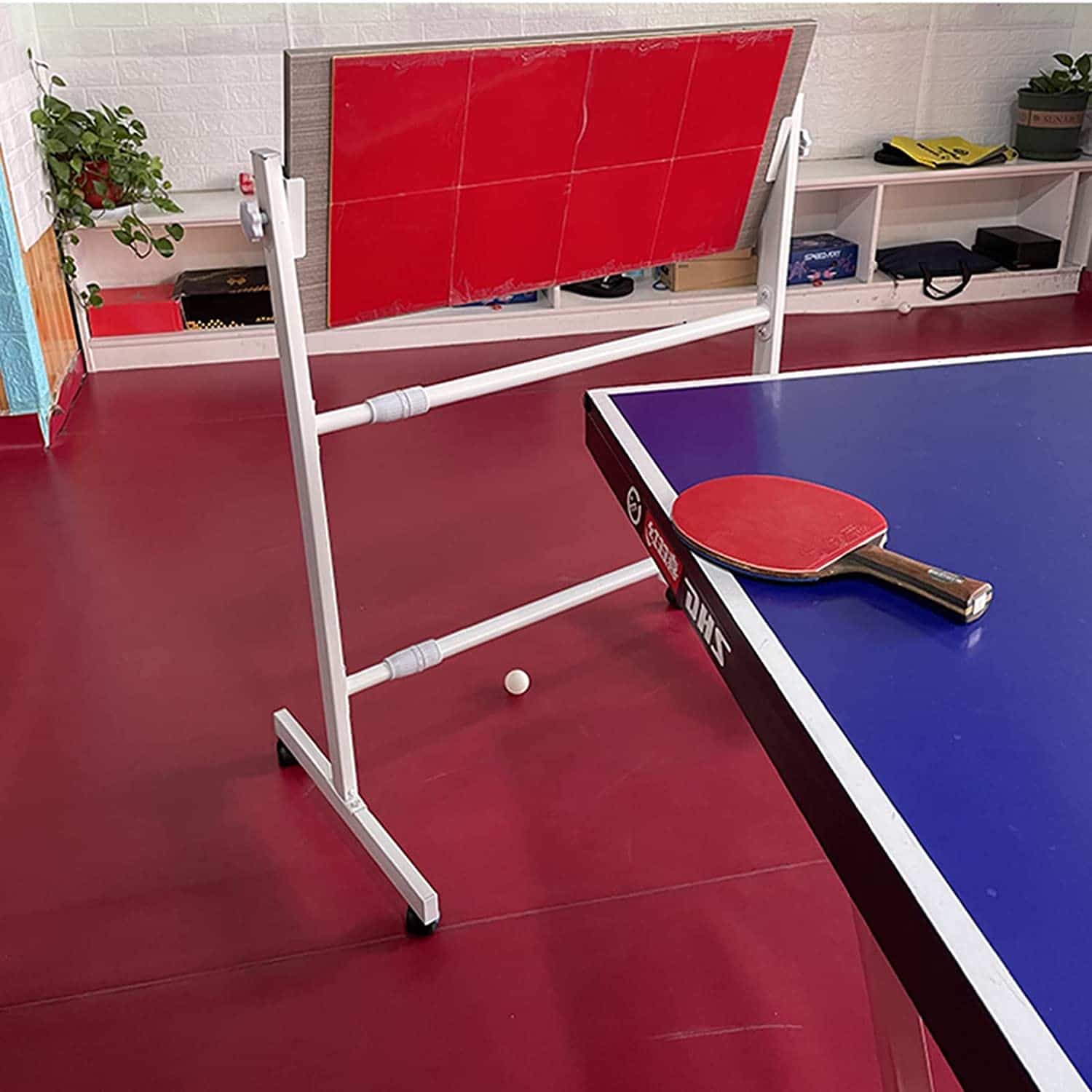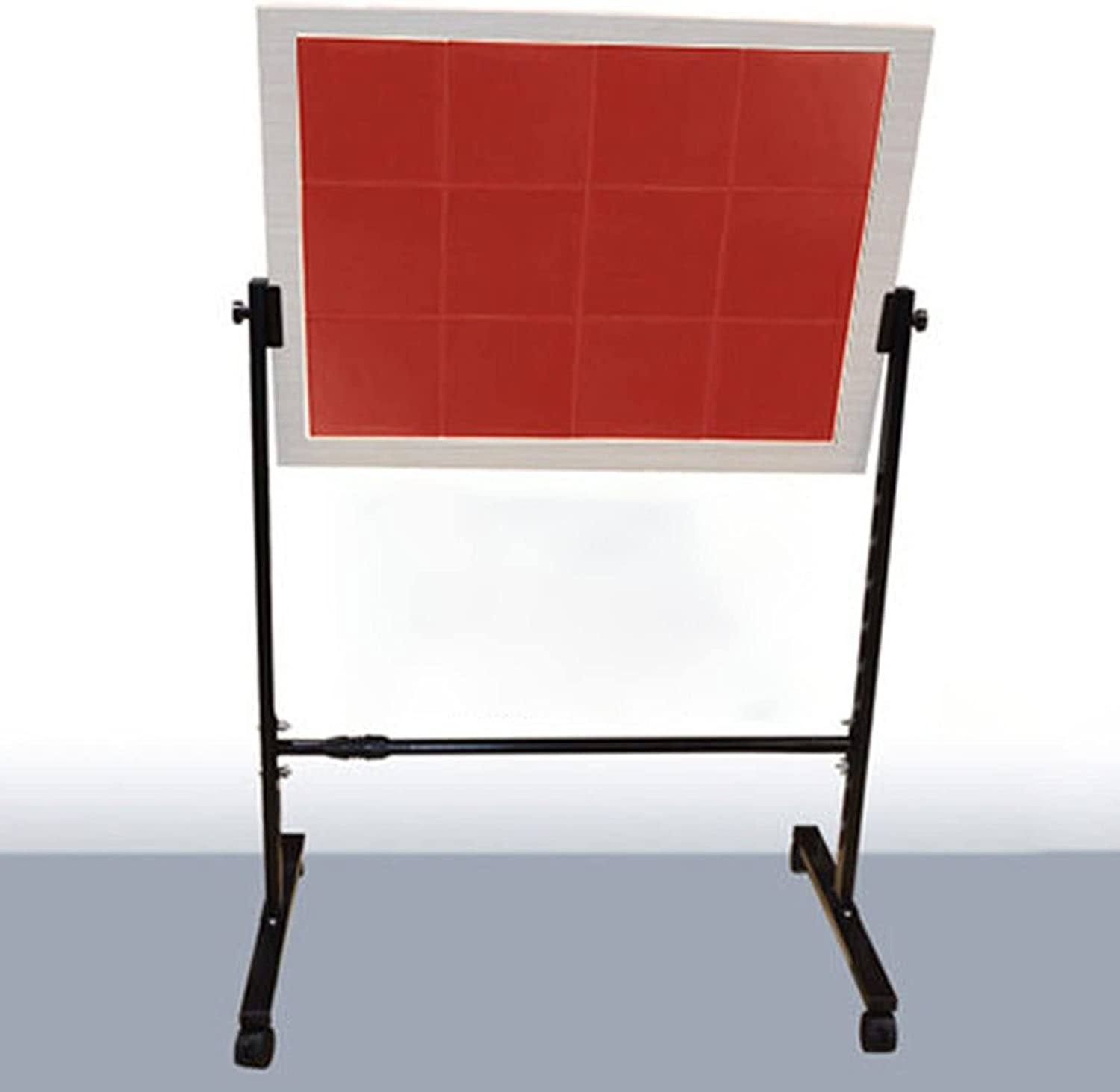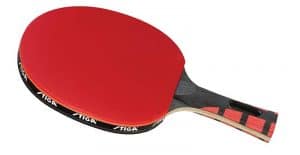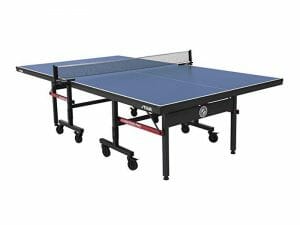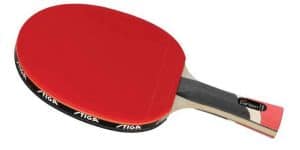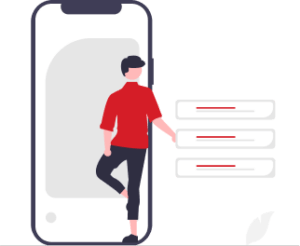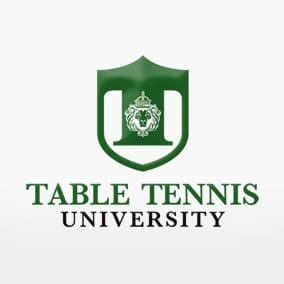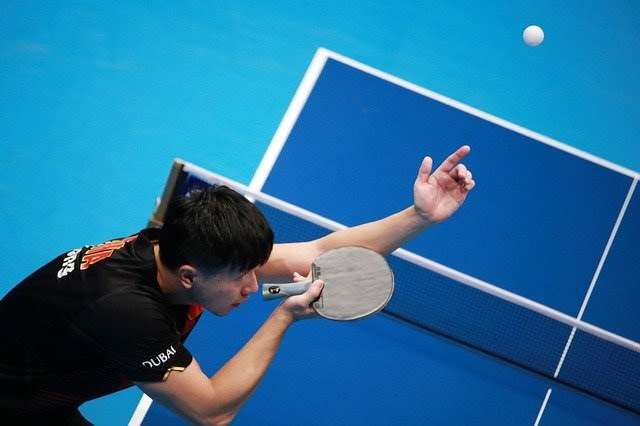Best Table Tennis Return Board in 2022
- Alex Horscroft
- Last updated
Whether you’re training to beat your friends, training for a league, or just want to not suck at ping pong anymore, then a table tennis return board could be perfect for you.
Which table tennis return board is the right one for you?
It’s a somewhat rarer form of training, lots of players might never have even heard of a return board. And yet, they are a great way to supplement your training. I picked up my first ping pong return board, gosh, around 7 years ago now.
Table of Contents
What Is a Return Board in Table Tennis?
A table tennis return board or ping pong rebound board is a stationary board that replicates a player’s actions. You place it at the opposite end of the table to yourself and hit the ball into it. The ball rebounds off of the return board and back onto your side of the table. Some return boards sit on the table itself, while others reside behind the table elevated on a stand. Return boards are great to work on attacking strokes such as loops.
Frequently find yourself wanting to train but lacking a training partner? This is one of the best use cases for training boards. However, they are still pretty great even if you have a partner available. They require accuracy and consistency, and in return, you get predictable shots that help you to refine your technique. Training partners have a habit of getting bored with drills, and often they are not as accurate at feeding you balls as you would like.
By drilling the same shots over and over, you narrow your area of focus and increase your rate of improvement. What’s more, as ping pong practice boards are great for driving and looping, they strengthen two of the most fundamental shots of the game. This ultimately makes you a much better player.
Who Should Buy a Return Board for Ping Pong?
Table tennis rebound boards are ideal for players who don’t have training partners. Whether it be you live in an isolated area, can’t find a player your skill level, or simply have a tight schedule, many players find there are times they want to play but can’t. This is where return boards come in. They are the training partner you never had! And they don’t get tired!
I’d say return ping pong rebounders are most suited for intermediate players. Beginners generally lack the consistency to deliver the correct shots for the return board to make a return. Similarly, advanced players already have fantastic techniques. They require more variation to better emulate match situations. That being said, I still think some beginners can make great use of return boards.
How Do You Use a Return Board?
Most of the time, you use a table tennis rebounder to practice you’re driving or looping. If you are a skilled player, you likely produce a lot of topspin on the ball. And this will simply be too much to handle for your opponents if they are beginners. This is why most people use them for looping. Of course, you can also practice other shots as pushing by rotating the board so that the angle is more open.
Limitations of Return Boards
Return boards are nifty little pieces of kit, but they are certainly not without their drawbacks. This is why you don’t see them too often.
The first issue is that they have a fixed position. They do not move as a regular player would. This means return boards do not adjust their angle or placement mid-point. You set the angle before playing, and it’s up to you to keep your strokes consistent so that the rally can stay alive. As such, you can’t vary your topspin much at all otherwise, the ball will fly over the end of the table or into the net. Similarly, you can’t employ too much sidespin, so you must keep hooks and fades to a minimum.
Another issue with table tennis rebound bards is the repetition. There is next to no variation using a return board which means it can get pretty tedious rather quickly unless you are driven. It could also lead to you developing bad habits such as not resetting to the ready position. There is also the fact that you are probably only training one area of your game, and that’s looping. This can lead to holes in your game — you should only use return boards to supplement your training, not lead it.
Return Boards Vs Robots
Given that robots are the other form of training to use when you are without a partner, it’s useful to know how the two compare. Most of the time, players will opt for a robot over a return board, but that is not always the case.
The main advantage robots have is that they are more versatile. Even basic robots can impart differing levels of spin and speed, allowing you to train more game elements. They also do not rely on your own consistency. Irrespective of whether you play the ball onto the table, it will feed you another. If you miss a shot with a return board while playing table tennis, you have to start over with a new ball which is a pain.
Of course, robots do require more balls if you want to get the most out of them, and this costs money. You will likely also end up with balls all over the floor, which is annoying to pick up. If you are using a return board, you don’t need anywhere near as many balls, and you can really get by with just a few if you need to.
Finally, you need to factor the expense of the robot in. If you are going to go for a basic model, you usually need at least a few hundred dollars, but you could spend thousands if you want a top model. The cheapest half-decent robot we could find is the IPONG V300. Its features are somewhat basic, but it could be a good choice for a beginner on a budget. Return boards, by comparison, have a much lower ceiling and are far cheaper if you build one yourself.
Read more: The Table Tennis Skills and Techniques You Need To Know
Want Another Option for Solo Practice?
IPONG V300
Table Tennis Return Board Reviews
yuanclllp Freestanding Return Board
Pros
- Large 8 rubber coverage
- Easily adjust board angle
- Solid frame
- Easy to move
- Lockable wheels
Cons
- Can’t be placed on the table for touch play
- Bad odor
Our Rating: 8.6
The Yuanclllp ping pong return board features 8 rubbers as is standard. This is perfectly sufficient to maintain long rallies. The rubbers attach to a wooden board that connects to a strong metal frame. This is a lot more resilient than what you would likely rig up if you chose to build a return board yourself. You can easily adjust the board’s angle by twisting the fly nuts at either end of the metal frame.
You can also move the board itself rather easily as the frame has 4 lockable wheels. So switching it from the forehand to the backhand side is a very quick job. The manufacturer recommends setting the angle to 80-82 degrees initially if you are a beginner. This gives you time to get used to the return board. Then gradually, as you develop your technique and produce more topspin, you close the board’s angle.
Yuanclllp provides multiple videos of the return board in action, so check them out if their return board interests you.
It’s our favorite board you can buy because of its value. yuancllp are much cheaper than the completion, and this board has no serious flaws.
yuanclllp Desktop Return Board
Pros
- Large 8 rubber coverage
- Easily adjust board angle
- Solid frame
- Can be placed short to practice pushes
Cons
- Corner protectors reduce hitting area
- Can’t use really deep loops
- Bad odor
Our Rating: 8.3
The yuanclllp desktop return board is largely the same as their freestanding version. It’s the second generation version of their return board and features a large hitting surface with 8 rubbers, stacked 2 high and 4 wide.
As a table top return board, you can place this board much closer to yourself on the table. This mainly serves as a benefit for pushing. Drilling pushes on freestanding return boards is much harder and less realistic as you have to feed each push long. This goes against what you will be trying to do in a match.
A drawback this board has over the freestanding version is the four corner protectors that invade the hitting area. While the space they take up is very small, it is a flaw nonetheless.
ZJMAMA Return Board
Pros
- Customizable rubber coverage
- Acts as both a freestanding and table top board
- Easily adjust board angle
- Solid frame
- Easy to move
Cons
- Expensive
Our Rating: 7.1
The ZJMAMA return board offers the most customization as you can choose both your rubber coverage and frame. The two board sizes are 3 rubbers wide by 2 high, and 4 rubbers wide by 2 high. But more interestingly, it comes with attachments for it to act as both a freestanding and table top return board. This means you can interchange them as needed, which is useful, albeit a bit fiddly. I recommend using the freestanding version most of the time.
The main drawback to the ZJMAMA return board is its price. It’s considerably more expensive than both models by yuanclllp, and I feel that it doesn’t offer enough value to warrant purchasing it over either of those.
LXLZYXSF Return Board
Pros
- Customizable rubber coverage
- Easily adjust board angle
- Solid frame
- Easy to move
- Lockable wheels
Cons
- Expensive
- Can’t be placed on the table for touch play
- Bad odor
Our Rating: 7
The LXLZYXSF return board is very similar to the model by yuanclllp. It’s freestanding, easy to adjust, and has lockable wheels. Available in three different forms, you can pick up the small, medium, or large version. The small version is 3 rubbers wide by 2 high, the medium is 4 by 2, and finally, the large is 4 by 3. This makes the large return board the biggest on this list.
Unfortunately, both the medium and large boards cost considerably more than the competitors. Therefore it’s inferior to the other return boards in our eyes. We only recommend purchasing the large version, and only if you really need the extra real estate. However, the medium version (4×2) should be enough when you get used to it.
Return Board Buyer’s Guide
Freestanding vs Table Top
Return boards come in two forms: freestanding and table top. While the two don’t differ all that much, there are some key facts you should know. The first is that both boards are limiting in their own way. Freestanding boards are limited by the edge of the table. this means you can’t bring them any closer. As a result, you can’t practice short pushes. On the other hand, table top return boards do allow you to drill short pushes. However, you can’t place them any further than the table’s edge. This means you can’t practice deep shots as the board is too close to you.
Another factor to consider is the space they take up. Freestanding return boards are pretty large and require a decently sized storage area. Table top boards, by comparison, are much smaller and easier to store.
Size
Return boards use uncut sheets of table tennis rubber glued beside one another to make up the hitting surface. This gives builders control over how large the return boards will be. Most are 4 rubbers wide by 2 rubbers high. However, you can find return boards that are both smaller and larger than this. If in doubt, I’d go for the standard 4×2 size.
Price
Value, value, value! That’s what goes through my mind when I’m making a purchase to further my training. Consider how much use you will make of the board and how effective it is at making you improve. I usually compare return boards to robots. As robots are more effective training tools, return boards need to be cheaper to be worthwhile in my opinion.
Read more: To check out the best table tennis robots on the market, read our full review.
Conclusion
Table tennis return boards are great pieces of kit to add to your training regimen. They help develop your driving and looping ability which is the foundation of modern table tennis. While we do recommend them, we still feel that robots provide more value. So if you can spare the extra money, consider getting a robot. However, if you want to go ahead and buy a return board, we recommend purchasing the yuanclllp freestanding return board — it offers the best value.
Just remember to make sure you play enough with a training partner. Return boards are very effective at developing consistency and technique but do not emulate match scenarios very well.
FAQs
Can I Make a Return Board?
You sure can! But to save the hassle, it’s a lot easier to buy one. If you’re set on making one, you’ll need MDF to act as the table tennis practice board’s foundation and some rubbers to glue on. To keep it cost-effective, you should buy very cheap rubbers such as Friendship Focus II. We recommend you get at least 4. Stick them together onto the MDF board so there are no gaps. You now have a makeshift bat (kind of!). It is then a matter of connecting it to a mechanism so it can’t stand and tilt. There are a few ways to do this, and you can get rather creative. We’ve seen people use objects such as monitor stands and tripods, both of which work rather well.
How Do You Use the Return Board in Table Tennis?
To use a return board, place it in the desired position opposite you and adjust the board angle relative to the spin you want to impart. You want a fairly close angle for drives, but for looping, you need a much more closed angle due to the extreme topspin.
When you have adjusted these settings, strike the ball onto the other side of the table and aim to hit the middle of the return board when the ball bounces. Continue the rally for as long as possible and adjust the settings when you want to train something different.
Which Return Board Is Best for Table Tennis?
After looking at the available options available, we feel that the best table tennis return board is the yuanclllp freestanding board. It’s well-built, has a big enough hitting surface, and is competitively priced.
Freelance writer. Table tennis enthusiast. Lover of all things online. When I’m not working on my loop game I’m probably binge-watching some fantasy show.
-
Alex Horscrofthttps://pingpongruler.com/author/alex-horscroft/
-
Alex Horscrofthttps://pingpongruler.com/author/alex-horscroft/
-
Alex Horscrofthttps://pingpongruler.com/author/alex-horscroft/
-
Alex Horscrofthttps://pingpongruler.com/author/alex-horscroft/
Popular Products
Join our email list for exclusive reviews & the latest Ping Pong News
Sign up to our newsletter and stay up-to-date with the latest news in the ping pong world, and be the first to read our new product reviews. We promise, no spam





